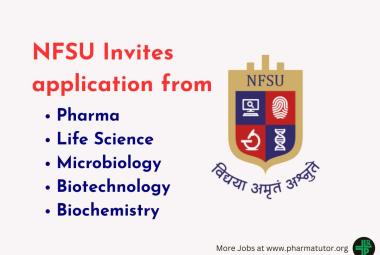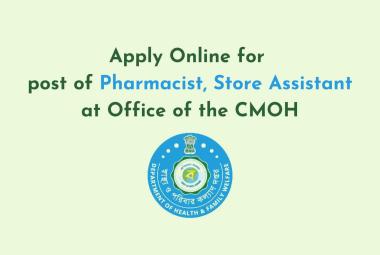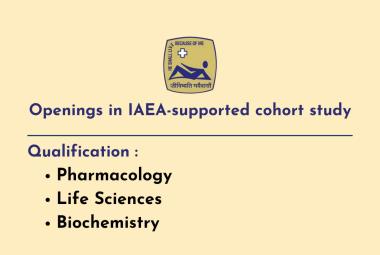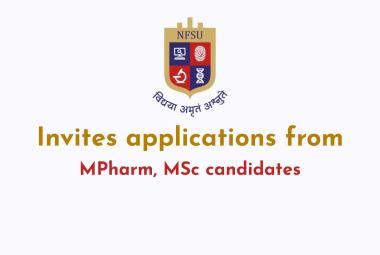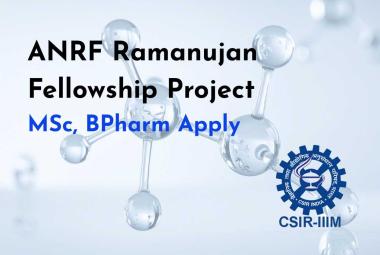ABOUT AUTHORS:
Mrs.R.Deepa
Assistant professor, Department of biochemistry
Madha dental college and hospital, kundrathur
Chennai, Tamil Nadu.
deepanish1981@gmail.com
ABSTRACT:
Reactive Oxygen Species are widely believed to be involved in the etiology of many diseases as indicated by the sign of oxidative stress seen in those diseases. Conversely antioxidants are believed to be protective. This article reviews the role of antioxidant in human health care.
REFERENCE ID: PHARMATUTOR-ART-1750
INTRODUCTION:
Antioxidants are substances that are capable of counteracting the damaging, but normal, effects of the physiological process of oxidation in animal tissue. Antioxidants are nutrients (vitamins and minerals) as well as enzymes (proteins in your body that assist in chemical reactions). They are believed to play a role in preventing the development of such chronic diseases as cancer, heart disease, stroke, Alzheimer's disease, Rheumatoid arthritis, and cataracts.
FREE RADICALS:
Oxidative stress occurs when the production of harmful molecules called free radicals is beyond the protective capability of the antioxidant defences. Free radicals are chemically active atoms or molecular fragments that have a charge due to an excess or deficient number of electrons. Examples of free radicals are the superoxide anion, hydroxyl radical, transition metals such as iron and copper, nitric acid, and ozone. Free radicals containing oxygen, known as reactive oxygen species (ROS), are the most biologically significant free radicals.
ROS include the radical’s superoxide and hydroxyl radical, plus derivatives of oxygen that do not contain unpaired electrons, such as hydrogen peroxide, singlet oxygen, and hypochlorous acid. Because they have one or more unpaired electrons, free radicals are highly unstable. They scavenge your body to grab or donate electrons, thereby damaging cells, proteins, and DNA (genetic material).
ANTIOXIDANTS:
Antioxidant means "against oxidation." Antioxidants work to protect lipids from per oxidation by radicals.Antioxidant act as a radical scavenger, hydrogen donor, electron donor, peroxide decomposer synergist, and metal chelating agents. Antioxidants are effective because they are willing to give up their own electrons to free radicals.
When a free radical gains the electron from an antioxidant it no longer needs to attack the cell and the chain reaction of oxidation is broken (4). After donating an electron an antioxidant becomes a free radical by definition. Antioxidants in this state are not harmful because they have the ability to accommodate the change in electrons without becoming reactive. The human body has an elaborate antioxidant defence system
FREE RADICALS AND ANTIOXIDANT MECHANISM:
Antioxidants are known to neutralise the harmful effect of free radicals and other reactive chemical species that are constantly generated by our body and are thought to promote better health..
CLASSIFICATION OF MAJOR ANTIOXIDANTS:
|
Enzymes |
Antioxidant |
Role |
Remarks |
|
Superoxide dismutase (SOD) Mitochondrial Cytoplasmic Extracellular |
Dismutates O2? to H2O2 |
Contains Manganese (Mn.SOD) Contains Copper & Zinc (CuZnSOD) Contains Copper (CuSOD) |
|
|
Catalase |
Dismutates H2O2 to H2O |
Tetrameric hemoprotein present in peroxisomes |
|
|
Glutathione peroxidase (GSH.Px) |
Removes H2O2 and lipid peroxides |
Selenoproteins (contains Se2+) Primarily in the cytosol also mitochondria Uses GSH |
|
|
Vitamins |
Alpha tocopherol |
Breaks lipid peroxidation Lipid peroxide and O2?and -OH scavenger |
Fat soluble vitamin |
|
Beta carotene |
Scavenges -OH,O2?and peroxy radicals Prevents oxidation of vitamin A Binds to transition metals |
Fat soluble vitamin |
|
|
Ascorbic acid |
Directly scavenges O2?, -OH, and H2O2 Neutralizes oxidants from stimulated neutrophils Contributes to regeneration of vitamin E |
Water soluble vitamin |
SOURCES OF ANTIOXIDANTS:
• Vitamin A (retinol), also synthesized by the body from beta-carotene, protects dark green, yellow and orange vegetables and fruits.
• Vitamin C (ascorbic acid) is a water-soluble compound that fulfils several roles in living systems. Important sources include citrus fruits (such as oranges, sweet lime, etc.), green peppers, broccoli, green leafy vegetables, black currants, strawberries, blueberries, seabuckthorn, raw cabbage and tomatoes.
• Vitamin E, including tocotrienol and tocopherol, is fat soluble and protects lipids. Sources include wheat germ, seabuckthorn, nuts, seeds, whole grains, green leafy vegetables, kiwifruit, vegetable oil, and fish-liver oil. Alpha-tocopherol is the main form in which vitamin E is consumed. Recent studies showed that some tocotrienol isomers have significant anti-oxidant properties.
MECHANISM OF ACTION OF ANTIOXIDANT:
Two principle mechanisms of action have been proposed for antioxidants. The first is a chain- breaking mechanism by which the primary antioxidant donates an electron to the free radical present in the systems. The second mechanism involves removal of ROS/reactive nitrogen species initiators (secondary antioxidants) by quenching chain-initiating catalyst. Antioxidants may exert their effect on biological systems by different mechanisms including electron donation, metal ion chelating, co-antioxidants, or by gene expression regulation.
ANTIOXIDANT IN HUMAN HEALTH:
BETA CAROTENE:
Beta-carotene is a form of vitamin A. Vitamin A is a strong immune booster. It stimulates the activity of immune cells against tumour cells and inhibits the promotion of cancer, while beta carotene (precursor to vitamin A) inhibits the initiation of cancer. It decrease the amount of damage free radicals do to a cell's DNA. Such DNA damage is thought to be one mechanism that causes cancer, and indeed, some early studies suggested that beta-carotene might reduce the risk of cancer. Many research reports on the anti-cancer properties of vitamin A and the related retinoids have been published overthe past 20 yrs.
Epidemiological studies reveal that people with high intakes of beta-carotene or high blood concentrations of this nutrient have a reduced risk of various diseases, including cancer and heart disease. Beta-carotene stimulates a molecule that helps the immune system target and destroys cancer.
VITAMIN C:
It is known that vitamin C acts as an antioxidant and free radical scavenger that reacts directly with super oxide, hydroxyl radicals, and singlet oxygen produced during normal cellular metabolism. Oxygen is necessary for life. Oxygen also comes in several radical forms that have been implicated in both initiation and post-initiation stages of the carcinogenic process as well as in invasion and metastatic processes.Antioxidants like ascorbic acid and tocopherols inhibit glucose autooxidation and inhibit glycation of serum proteins.Vitamin C is also to modify incidence of and risk factors for CVD. Higher plasma levels of vitamin C have been associated with reduced risk of stroke or coronary heart disease.
VITAMIN E:
A key nutrient required for strong immune response and an important fat-soluble antioxidant, vitamin E's preventive role in cancer has been well proven. The use of vitamin E concurrently with chemotherapy and radiotherapy is unclear.. Vitamin E is a "potent antioxidant, it may interfere with glucose oxidation and prevent diabetes. The cardio protective effects of vitamin E are attributed to protect the LDL from oxidation. Vitamin E may prevent blood clots and the formation of fatty plaques and cell proliferation on the walls of the arteries
SELINIUM:
Selenium is considered an essential trace mineral or micronutrient. . It is a powerful antioxidant with a central role in the protection of tissues from the damaging effects of oxygen free radicals. The use of selenium compounds as a cancer treatment predates most conventional treatments currently in use. In spite of this, comparatively little is known regarding the use of selenium as a cancer therapy in the active cell. Research suggests that selenium may play a rolein reducing the risk of cancer by binding with glutathione peroxidase (GSH-Px) to combat destruction caused by free radicals and protect cellular membranes
ANTIOXIDANT ENZYMES:
· Antioxidant enzymes catalysing the breakdown of free radicals.
· Superoxide dismutase {SOD}-Intracellular removes superoxide radical by speeding their dismutation.
· Catalase-intracellular removes H2O2
· Glutathione peroxidise-Selenium Containing enzymes removes H2O2 and other peroxide regenerates ascorbate from dehydroascorbate and detoxification of xenobiotics
RESULT AND CONCLUSION:
A balance between free radicals and antioxidants is necessary for proper physiological function. This article reviews the different potential application of antioxidant/free radicals manipulation in prevention or control of diseases.
REFERENCES:
1. Hilliwell B, gutteridge jmc , (eds) free radicals in biology and medicine ,oxford university press, oxford , 1997.
2. Yoshikawa T , Toyokuni S , Yamamoto Y ,and Naito Y ,(eds) free radicals in chemistry, biology and medicine, OICA international , London, 2000 .
3. Devasagayam TPA and kesavan PC, Radio protector antioxidant action of caffeine: mechanistic considerations. Indin J EXPT boil 1996; 34,291-7.
4. Sies H .(ed),antioxidants in disease mechanisms and therapy , academic press , newyork ,1996.
5. Cadenas E and packer L , (eds) handbook of antioxidants. Plemum publishers, New York, 1996.
6. Knight JA .review: free radicals, antioxidants and the immune system Ann Clin Lab sci 2000; 30:145 -58.
7. Packer L and Ong ASH. (eds) biological oxidants and antioxidants : molecular mechanisms and health effects , AOCS press ,champing , 1998.
8. Kagan VE, kisin ER, kawai K, et al .towards mechanism based antioxidant interventions. Ann N Y acad sci 2002; 959:188 -98.
9. Vivekananthan DP, pnn MS sapp SK, et al. use of antioxidant vitamins for the prevention of cardiovascular disease: meta –analysis of randomized trials. the lancet 2003; 361 :2017 -23
10. Mohammed AA, Ibrahim AA. Pathological roles of reactive oxygen species and their defence mechanism. Saudi Pharm J 2004; 12:1-18. 11. Bagchi K, Puri S. Free radicals and antioxidants in health and disease. East Mediterranean Health Jr 1998;4:350-60
12. Aruoma OI. Nutrition and health aspects of free radicals and antioxidants. Food Chem Toxicol 1994;32:671-83
13. Young IS, Woodside JV. Antioxidants in health and disease. J Clin Pathol 2001; 54:176-86.
14. Cheeseman KH, Slater TF. An introduction to free radicals chemistry. Br Med Bull 1993;49:481-93
15. Langseth L. Oxidants, antioxidants and disease prevention. Belgium, International Life Science Institute, 1996.
16. Harman D. Role of free radicals in aging and disease. Annals of New York Academy of Sciences, 1992, 673:126-141.
17. Rouhiainen P, Rouhiainen H, Solonen JT. Association between low plasma vitamin E concentration and progression of early cortical lens opacities. American journal of epidemiology, 1996, 144(5): 496-500.
18. The Effect of Vitamin E and Beta Carotene on the Incidence of Lung Cancer and Other Cancers in Male Smokers New England Journal of Medicine (NEJM). vol 330 (15) Apr. 14, 1994. pp 1029-1035.
19. A Clinical Trial of Antioxidant Vitamins to Prevent Colorectal Adenoma NEJM, vol 331 (3). July 21, 1994. pp 141-147
20. Antioxidant Vitamins -- Benefits Not Yet Proved (editorial) NEJM vol 330 (15) Apr. 14, 1994. p 1080 - 1081
21. Antioxidants and Physical Performance (review) Critical Reviews in Food Science and Nutrition, 35(1&2):131-141 (1995).
NOW YOU CAN ALSO PUBLISH YOUR ARTICLE ONLINE.
SUBMIT YOUR ARTICLE/PROJECT AT articles@pharmatutor.org
Subscribe to Pharmatutor Alerts by Email
FIND OUT MORE ARTICLES AT OUR DATABASE



